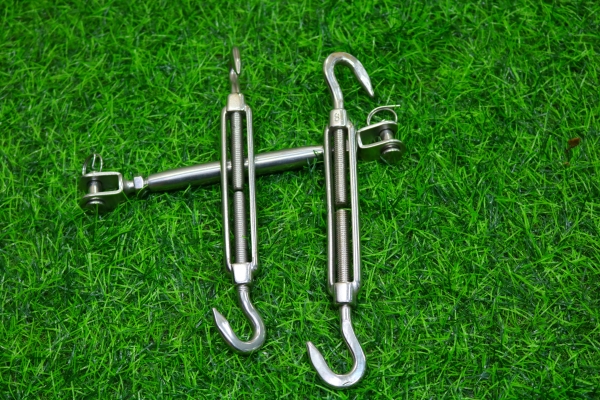Table of Contents
Benefits of Using Stainless Steel Bolts in High Temperature Environments
Stainless steel bolts are a popular choice for fastening applications in high temperature environments due to their exceptional heat resistance properties. These bolts are made from a combination of iron, chromium, and other alloying elements, which provide them with the ability to withstand extreme temperatures without losing their structural integrity. In this article, we will explore the benefits of using stainless steel bolts in high temperature environments and why they are the preferred choice for many industries.
One of the key advantages of stainless steel bolts in high temperature environments is their resistance to oxidation. When exposed to high temperatures, many metals can undergo oxidation, which can weaken the material and lead to premature failure. However, stainless steel bolts have a protective layer of chromium oxide on their surface, which acts as a barrier against oxidation. This allows the bolts to maintain their strength and durability even in the most extreme heat conditions.
In addition to their resistance to oxidation, stainless steel bolts also have excellent mechanical properties at high temperatures. Unlike other materials that may become brittle or lose their strength when exposed to heat, stainless steel bolts retain their toughness and ductility. This means that they can continue to perform reliably even in environments where temperatures reach hundreds or even thousands of degrees Celsius.
Furthermore, stainless steel bolts have a high melting point, which makes them ideal for applications where temperatures can exceed the limits of other materials. The melting point of stainless steel can vary depending on the specific alloy used, but it is generally much higher than that of carbon steel or aluminum. This allows stainless steel bolts to maintain their structural integrity even in the most extreme heat conditions, making them a reliable choice for high temperature applications.
Another benefit of using stainless steel bolts in high temperature environments is their corrosion resistance. In addition to their resistance to oxidation, stainless steel bolts are also highly resistant to corrosion from chemicals, moisture, and other environmental factors. This makes them ideal for use in industries such as petrochemical, aerospace, and automotive, where exposure to harsh conditions is common.
Additionally, stainless steel bolts are easy to maintain and have a long service life, which can help reduce maintenance costs and downtime in high temperature environments. Unlike other materials that may require frequent replacement or repair, stainless steel bolts are known for their durability and longevity. This means that once installed, stainless steel bolts can provide reliable performance for years to come, even in the most demanding heat conditions.
In conclusion, stainless steel bolts are an excellent choice for fastening applications in high temperature environments due to their exceptional heat resistance properties. From their resistance to oxidation and corrosion to their high melting point and excellent mechanical properties, stainless steel bolts offer a range of benefits that make them the preferred choice for many industries. Whether used in petrochemical plants, aerospace applications, or automotive manufacturing, stainless steel bolts provide a reliable and durable solution for fastening needs in extreme heat conditions.
How to Properly Install and Maintain Heat Resistant Stainless Steel Bolts
Stainless steel bolts are a popular choice for many applications due to their durability and resistance to corrosion. When it comes to heat resistant stainless steel bolts, proper installation and maintenance are crucial to ensure their longevity and performance. In this article, we will discuss the importance of using heat resistant stainless steel bolts, as well as provide guidelines on how to properly install and maintain them.
Heat resistant stainless steel bolts are specifically designed to withstand high temperatures without losing their strength or integrity. These bolts are commonly used in industries such as automotive, aerospace, and construction, where exposure to extreme heat is a common occurrence. By using heat resistant stainless steel bolts, you can ensure that your equipment and structures remain secure and reliable even in the harshest of conditions.
When it comes to installing heat resistant stainless steel bolts, there are several key factors to consider. First and foremost, it is important to choose the right type of bolt for your specific application. Different grades of stainless steel have different levels of heat resistance, so be sure to select a bolt that is suitable for the temperature range you will be working with.

Once you have selected the appropriate bolt, it is essential to follow proper installation procedures to ensure a secure and reliable connection. Start by cleaning the mating surfaces thoroughly to remove any dirt, debris, or contaminants that could compromise the integrity of the bolted joint. Next, apply a lubricant or anti-seize compound to the threads of the bolt to prevent galling and ensure smooth tightening.
When tightening the bolt, be sure to use the correct torque value as specified by the manufacturer. Over-tightening can lead to stress on the bolt and potentially cause it to fail prematurely, while under-tightening can result in a loose connection that is prone to vibration and loosening over time. Use a calibrated torque wrench to achieve the proper torque value and avoid any issues with the bolted joint.
In addition to proper installation, regular maintenance is essential to ensure the longevity and performance of heat resistant stainless steel bolts. Inspect the bolts periodically for signs of wear, corrosion, or damage, and replace any bolts that show signs of deterioration. Lubricate the bolts as needed to prevent galling and ensure smooth operation.
If you are working in an environment with high temperatures or extreme conditions, consider using heat resistant coatings or insulating materials to protect the bolts from heat exposure. These additional measures can help extend the lifespan of the bolts and ensure their continued performance in challenging environments.
In conclusion, heat resistant stainless steel bolts are a valuable asset in applications where high temperatures are a concern. By following proper installation procedures and regular maintenance practices, you can ensure that your bolts remain secure and reliable for years to come. Remember to choose the right type of bolt for your specific application, use the correct torque value during installation, and inspect the bolts regularly for signs of wear or damage. With proper care and maintenance, heat resistant stainless steel bolts can provide reliable performance in even the most demanding environments.






